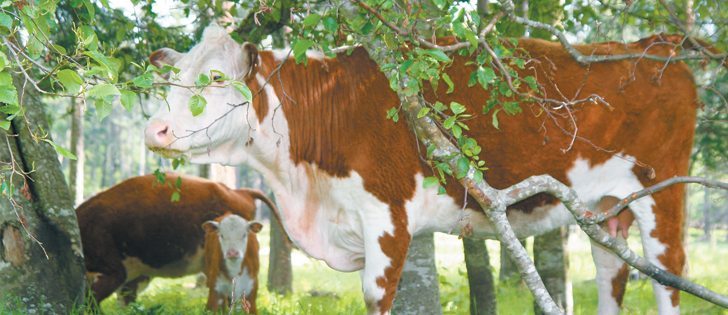Improving meat quality | Finding tenderness gene is only one part of the puzzle
Finding the gene responsible for tender beef is just one way to improve quality.
“We could genetically have the most tender cattle in the world but if we mess up on the management, we mess up at the packing plant, in cold storage and if we don’t age it, we are going to have some tough steaks,” said Steve Miller, head of the centre for genetic improvement at the University of Guelph.
“We could fix a lot of tenderness problems with aging,” he said.
Read Also

Breaking down successful winter feeding into six steps
It’s that time of year when it is important to start planning for a cow herd’s winter feeding program. Here are six steps I think are necessary to consider when getting your feed tested.
Beef quality audits in Canada and the United States report tough beef is an ongoing complaint, but there is no single solution to improving eating quality, he said at the world Hereford conference where more than 600 visitors from 17 member countries gathered in Calgary.
A 2009 Canadian beef quality survey found one out of four steaks were tough.
A U.S. quality audit found insufficient marbling was the single greatest complaint along with wrong-sized cuts and lack of uniformity among carcasses.
Canadian and U.S. grading systems use marbling as a quality attribute and cattle have been selected on that basis.
However, research shows there is a weak genetic correlation between tenderness and marbling.
“If we want to improve tenderness we are not going to do it with marbling,” he said.
Shear force tests show the two are weakly correlated. This test measures how much force is needed to cut through a piece of cooked meat.
Miller figures about 20 percent of the toughness problem is due to genetic deficiencies and the rest is management.
Guelph university is running tests on its herds of Simmental, Angus and Piedmontese breeding to identify the genetic markers associated with tenderness.
Tenderness may not be the most important attribute among producers because they are paid by the pound. They are more likely to select bulls that offer growth and feed efficiency.
“Consumers say they want it but unless someone pays for it, producers aren’t going to do it,” he said.
If a packer offered an extra five cents a pound, more people would probably pursue breeding for tenderness.
Branded beef programs often use tenderness as a quality that sets them apart and people are usually paid more for qualifying, but the product is also more expensive at the meat counter.
Finding a bull guaranteed to produce tender meat calves is difficult due to the complexity of the bovine genome.
Cattle have 30 sets of chromosomes and three billion base pairs made up of proteins labelled C, G, T and A that run in sequences. If the entire sequence was typed out at 12 point type on a piece of tape, it would reach across Canada, said Miller.
If one part of the sequence is changed, the outcome is changed.
The chemical sequence has to be copied every time a cell divides or an egg and sperm meet. Mistakes are made.
Other genes often clean up the mistakes but some slip through as mutations that may have good or bad effects, said Dorian Garrick of the University of Iowa.
The genome is the complete sequence of genes present in an organism and genomics is used to predict whether individuals are below average, average or above average for expressing certain traits.
“Most people would be surprised by the amount of variation from one sire,” he said.
Various breeds are offering information on sires carrying marbling genes and tenderness through DNA technology that finds the correct SNP, or the single nucleotide polymorphism. This is not the actual gene but appears to be located close to a single change in the genetic sequence.
While DNA should reveal whether a sire is capable of passing on certain qualities before it has produced many calves, unexpected variabilities remain due to the environment and management of the dam.
“We don’t actually learn much from how good that sire is but we can learn quite a lot about that sire from the performance of offspring,” he said.
However, as researchers learn more about the location of valuable traits, others should fall into place.
For example, many scientists have studied which genes control whether an animal has horns, scurs or will be polled. Scurs are growths not attached to the skull.
The horned gene is on chromosome one while the genes controlling scurs appear on chromosome 19. They behave differently in females.
Polled and scurs genes interact but the actual genes and causal mutations are unknown.
“At some point in the future somebody will discover these mutations,” he said.
Once this is worked out the same technology can be used to more accurately find other traits like growth, tenderness and birth weights.
















